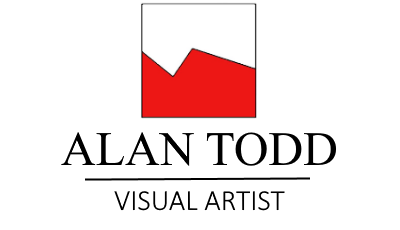I had a brief discussion with some doorstep visitors a day ago. They wanted to talk about God, the bible and free will. While respecting their views I said that I didn’t deal in the supernatural and that the origins of the bible were murky and more an accumulation of loose history than anything else. However, when it came to free will I doubted that it existed at all. Between genetic programming – essentially survivalist – and social/cultural programming, there wasn’t much room for decision-making that was free of prejudice.
That idea led me to thoughts of just how much free-will exists in the creative process that begins with perception and leads to an intellectual re-ordering labelled as imagination and valued for its seeming randomness. But, just how random is this process?
Perception is the ability to see, hear, or become aware of something through the senses. How that process occurs is seemingly random. Two people experiencing the same phenomenon will internalise quite different data. There have been innumerable occasions where evidence gathered at the scene of an accident has been wildly contradictory as cultural and genetic programming played a role. Someone steeped in a mathematical view of the world may well concentrate on speed, distance and the rule of logic. Someone else may not ‘see’ any of that and perceive the incident as an example of human tragedy. Descriptions of participants may not even agree on gender, height or any other physical characteristics. Selective perception is inevitable.
A hard determinist would say that creative insight works just like any other thought process—the insights were predetermined by the state of the universe and the laws of physics. I doubt that artists see their work in that way and writers about artists tend to divide an artist’s work into inspiration and process. As with the likes of a Francis Bacon, his predisposition towards violence can be traced back to a childhood in Ireland steeped in parental indifference and blood sports. In many respects causality was predetermined and while he was free to choose imagery to express this, inevitably his figures were distorted and stylised self-portraits. Was it inevitable or predictable that Bacon would go down this path? He chose to express his confusion in paint as opposed to words or music however, the process through which he expressed himself was based not in randomness but accepted methodologies. For example, he used rectangular portable canvasses, an idea propagated a millennium previously. He was free to choose the size or proportions in so far as the manufacturers of stretchers limit their stock to predetermined sizes. As an artist who set out to sell his work, size became a determining factor in what individuals or institutions were willing to accept given their available wall or vault space.
Process is also determined by ideas of beauty and acceptability. Whatever definition of beauty is being applied, whether personal or culturally collective, there are seeming norms and agreements that are in part genetic and in part cultural. Artists that step outside those parameters are free to do so but the market place and history will in the end determine value. The art market as a guide to acceptability is a predictable determinist system and while the myriad directions evident in modern art suggest randomness, every direction can be traced back in a determinist way. For example, I have read that the work of Pollock has its origins in Impressionism and particularly the Giverny period of Monet when his eyesight was failing. Monet’s acceptance of painting en-plein-air stems back to the invention of portable paint tubes and Barbizon painters venturing out into the landscape as a reaction against studio painters. Painting the landscape as a subject has its own origins. While Picasso is said to have invented Cubism he needed Cezanne and the determinants of contemporary physics to explain perception and how the stereoscopic eye is a portal for gathering information. The physical results of that theory seem far from random at this distance.
All of the abstract painters in the world claim originality based upon their unique vision and yet the similarities in results determined by compositional and paint application methodologies while associated with a randomness of human volition can only be described as limited free will.
Humankind is predictable in its need for order. Whether that takes the forms of columns, rows or divisions of the circle and rectangle, the determinants have always been present as part of human genetic makeup. Creativity needs it structures and reflecting this underlying predilection is an important consideration to acceptance of works of art. The basis of composition is geometric and even if radical modernist thinking removed all signs of the artist’s hand and a canvas was painted blue, the external dimensions/proportions of the stretcher played a significant part. The remove from chaos is a human characteristic and whether from a genetic pre-disposition to order or a need to belong to a recognised social group where acceptance is determined through survivalist factors, those same factors determine the extent of free will available. It isn’t so much a matter of free will as limited choices.
There are those in society who claim the right to do whatever they want, whenever they want. To an extent society tolerates such behaviour but that is the point. Tolerance is set within guidelines and laws which promulgate and protect order. ‘Radical’ artists are tolerated and encouraged as a necessary basis to establishing those norms and inevitably become mainstream before they know it. Free will with constraints.
